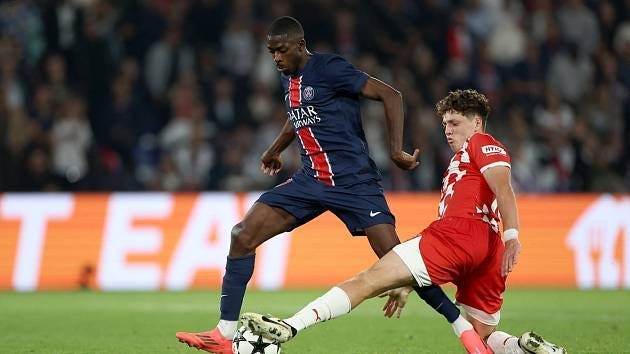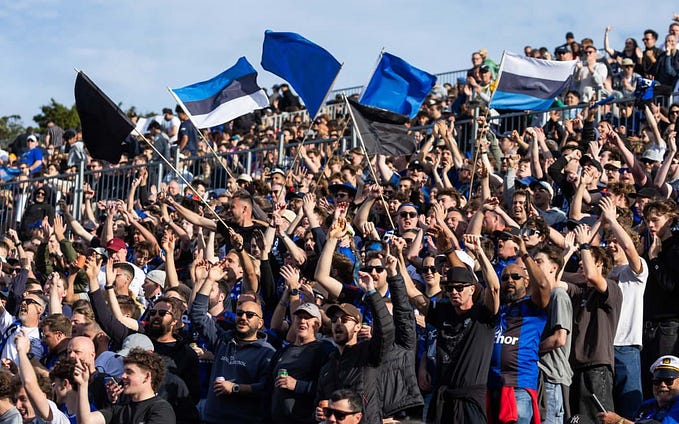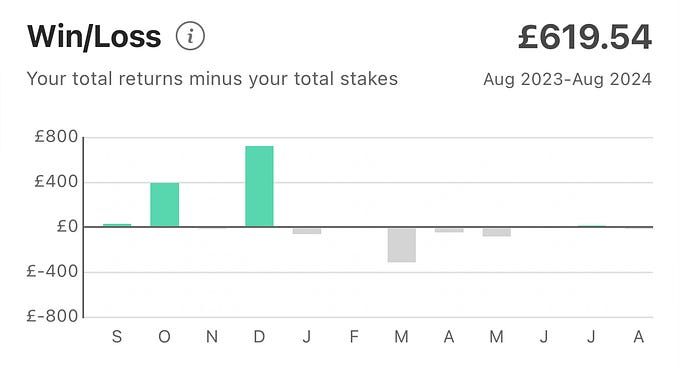Ben White — How he learned, developed and played under ‘El Loco’

(This article was published in Total Football Analysis’ September magazine issue, written on September 4th, 2019. It’s clear how White has developed under Bielsa, and now turning into one of the top targets for many big clubs. I feel like it’s worth looking back at how he started his journey at Leeds, and then developed into one of the most promising centre-backs across all English leagues, not to say across Europe.)
Last season under Marcelo Bielsa, Leeds United had had a very impressive season with their high-intensity style of play. They focused on building attacks from the backline and progressing the ball up the pitch quickly. Furthermore, rapid turnovers and aggressive pressing were also some of their most noticeable tactical points from last season.
As for his individuals, specifically the centre-backs, “El Loco” required them to be comfortable on the ball and able to make passes. At the same time, they must be aggressive in recovering possession which prevented the opposition from reaching the 16-yard box. In Leeds’ 4–1–2–3 formation, the two names that positioned at the heart of their defence was club captain Liam Cooper and Pontus Jansson.
They have formed a very tight bond with each other and helped Leeds finished as the third-best team in terms of the goal conceded. But this summer window, the Swedish centre-back had left the club for Brentford. This left a very big gap that needed to fill in, but the director of football Víctor Orta and Bielsa didn’t waste much time to find his replacement.
Even before Jansson’s departure, Leeds have announced the loan signing of Brighton youngster Ben White. He arrived at the club after signing a one-year extension with The Seagulls and still has high hopes from the coaching staff. This season with the Yorkshire-based club will be his first season in the Championship after spending time in the lower divisions with Newport County and Peterborough United.
Now, after the first six games have gone through, we will look at White’s performance in this tactical analysis scout report. Meanwhile, using statistics and footages, we will also provide an analysis of his outstanding attributes that turned him into one of the nominees for the Championship’s August Player of the Month.
Overview and style of play
White spent the early days of his career at Southampton but could not make the cut when he was sixteen. Then, Brighton came in for him and gave him the chance to develop himself. After two years developing among their youth ranks, the young English defender was sent on loan to Newport in 2017.
He immediately became a starter for the then-League Two side, making a total of 52 appearances across all competitions and scored one goal. With the impressive performance that he had during his time at South Wales, White was awarded as Newport’s 2017–18 Player of the Year and received many compliments from manager Michael Flynn.
In January 2019, Peterborough asked for him to go on loan for the second period. Quickly enough, the spell finished with White making sixteen appearances in the League One and the FA Cup. Just six months later, he arrived at his third loan club in Leeds United as they prepared for their Championship campaign.
This season, Bielsa tends to use his familiar 4–1–2–3 formation with White starting as a right centre-back. Alongside with Cooper and half-back Kalvin Phillips, they create a passing triangle inside their own half which helps them circulating and progressing the ball. Meanwhile, both wing-backs, usually Barry Douglas, Ezgjan Alioski and Stuart Dallas, would overlap into the opposition’s half and ready for an attack.
As a natural ball-playing defender, he takes on the responsibility of making penetrative passes towards the attackers. With a total of 385 passes made after six matches, he is currently the top passer for Leeds and the third-best in the Championship. Also, White registered the accurate rate which stands at 87.6%, the highest among the three centre-backs.

During the few games, the Argentinian manager also tested his 3–4–1–2 formation with a three-man back-line that received supports from the wing-backs. Below was his choice to play in their 3–0 win over Stoke City.
White remained as a right-sided centre-back while Phillips dropped in between him and Gaetano Berardi. Still playing in the role of a ball-playing defender, he now had the license of drifting wider into the half-space. This back-line allowed Leeds to counter against Stoke’s narrow formation and direct attacks inside the central area.

Statistically speaking, he is one of the top passers for Leeds this season, making 18.57 forward passes (with the accuracy rate of 73.58%) and 6.34 long balls (53.57%) per 90 minutes. In defence, White registers 7.58 defensive duels (won 72.14% of them) per 90 minutes, 0.33 tackles and 7.35 interceptions per 30 possession for the opposition.
Defensive responsibilities
Leeds is a team who usually put an emphasis on how they press the opposition. They tend to commit players forward and overloads the area surround the ball carrier. Furthermore, the defensive line occasionally pushes higher up the pitch to intercept long balls that come towards them.
This leaves a potential problem that the attackers could capitalise, which is gaps being created behind their backs. But White’s positioning helps them fill in those areas and cut the through passes. He times his run well to predict where the ball would go while keeps the runner behind him in control. It allows him to recover possession easier and creates insurance for his colleagues.

With the role that he is currently occupying and combined with the situation above, it is easy to notice that White is a covering defender. His responsibility is to drop deeper than the others and provide a shield when his teammates step out of position. Rather than directly involving in defensive duels, he could act as the last player in defence and create the assuredness to continue the press.
But, on a few occasions, he swaps the role with one of his teammates whenever the ball carrier is heading towards him. In the shot below, Phillips followed Michael Jacobs and only turned his attention to Antonee Robinson. After the Wigan’s winger made the pass towards Robinson, Leeds’ half-back got caught off in his position. This required White to step out and marked Robinson. Instead, he kept a sufficient distance in which he could predict what was his next move and intercept it.

It showed another trait that the Brighton loanee has developed. Although Newport’s gaffer Flynn praised him for his tackling, he does not dive into tackles and attempts to win the ball in an aggressive way. The numbers also showed this, as he only made 0.37 tackles per 90 minutes this season. Instead, he registered 14.29 recoveries per game in which 13.8% of them occurred inside the opposite half.
Currently occupying that role at Leeds and earlier at Peterborough, he also had many crucial clearances in which saved the team from conceding a goal. Against Luton Town last season, he had a block that prevented George Moncur from getting his name on the scoresheet. Using his positioning, White identified where the former Barnsley midfielder was intended to drive the ball towards. Furthermore, with goalkeeper Aaron Chapman had moved aside quite a bit, it created space where White could move in and made a slide to clear the ball.

Here is an interesting fact before you continue reading the rest of the article. This November will mark the third consecutive meeting between Ben White and Luton Town. And interestingly, those three meetings had and will occur in three different divisions. As mentioned, he had spent time on loan with Newport and Peterborough in the recent two seasons. During the same period, Luton also secured back-to-back promotions and they will welcome Leeds to their home ground in matchday seventeen.
Besides his positioning which helps him recovering possession for the team, the compose attitude also plays a very important role. Under pressure, he usually remains calm and read the situation thoroughly before making a decision. For a 21-year-old defender, his maturity in play is not something that most players making a step up from the lower divisions have.
The shot below demonstrates a 2v1 situation that White was involved against Stoke City. After bypassed Berardi, Tom Ince dribbled the ball inwards and put the pressure on the young English defender. But since he knew what he had to do; it allowed him to execute his plan exquisitely.
While keeping Scott Hogan in control, White approached Tom Ince immediately after his heavy touch and cleared the ball right onto his feet. It deflected and went wide, which brought Leeds a goal-kick. Furthermore, his approach also eliminated the chance of Ince laying the ball to the Aston Villa loanee. In hindsight, the former Derby winger could have picked up the option of passing the ball towards Oghenekaro Etebo. But since White was quickly running towards him, he was not able to turn his head to look for an alternative passing option.

His role in the team’s build-up and attacking play
Confidence and composure, not only he shows those attributes while defending the goal, but he also demonstrates it when he is on the ball. Bielsa usually highly-rated defenders who can bring to the team that kind of mentalities. His style of play requires centre-backs to be comfortable on the ball and remains calm against the threat to find a solution.
“El Loco” also wants his players to progress the ball along with making progressive runs. And in order to do that, they must have a quick mind to pick out a position to receive the pass while narrow down the support range. Immediately after receiving the ball, more passing sequences and triangles will be created to help the ball circulating occurs efficiently.
White has all the attributes to both involve in the team’s build-up and even join the attack along with his teammates. But firstly, let us talk about how Leeds build their attacks from the backline. As mentioned, White remains on the right-hand side and stretches the triangle out by moving into the right half-space. He stays quite higher compared to Phillips, who now drops deep in between the centre-backs, and even Cooper. This allows him to link up with the midfielders and combines with them to bring the ball into play.

Whether it is playing in a back-four or a back-three, that build-up principle remains the same and the same can be said for the players’ role. With two ball-playing defenders in the squad, Bielsa also allows them to make long balls occasionally. The use of those long passes is to change the attacking direction. In case the opposition have overloaded on one side of the pitch, White could shift the ball towards the winger on the opposite wing to continue the attack.
He also tends to delay the ball for a few seconds before making his decision. Though, it only happens when there are no players applying pressure on him. White would stop the play to observe the situation clearer and pick out his teammates who are in a position where they can receive the ball. When he does notice somebody, he will send them the ball and reduce the team’s build-up time. If not, the option of circulating the ball among that triangle is still viable and he could leave that responsibility for the other two.

Below is White’s pass map against Bristol City, provided by @LUFCData. In his debut, he was used as a right centre-back so it doesn’t come as a surprise when the density of his passes is mostly focused inside the right half-space. At times, he even drifted wide into the wide area to make passes, which are mostly long-range and might even be clearances.
But as we reach closer to Leeds’ 16-yard box from the halfway line, the density is getting sparse. Also, the distance of most of White’s passes in front of the box is quite short as he preferred to keep the security for Kiko Casilla’s goal. We can also notice that some of his passes on the edge of the middle third had its destination heading towards the left-hand side, similar to the shot above.

Furthermore, White is also a decent dribbler when he controls possession. At Newport, he was mainly used as a right-back while also shifted to the opposite side on a few occasions. The Brighton youngster divided his attacking and defending responsibilities quite equally. He was able to surge forward runs to join the attack and track back to form the back four.
As an attacking full-back, he tends to overlap down the right-hand side to provide supports for the winger up front. Also, with the advantage of being a two-footed player, it is possible for White to interchange his position occasionally.
In his role of a centre-back, he also likes dribbling with the ball. But he rarely makes a run into the opposition’s half and attempts to create a chance on his own. Instead, he would bring the ball into play by connecting with the midfielders up front. Leeds’s central midfielders could be benefitted by White’s trait as they could stay in a higher position than usual to receive the ball.

No matter on which sides he plays, as long as he could position himself in free space with the ball, a cross will be sent in for a receiver. Using the vision that he develops when he occupies the distributing defender role, he could pick out a teammate inside the box and send the ball in.
Although it seems quite rare to see White do this, there might be a possibility that he will replace Stuart Dallas in case Bielsa wants some rotations. But for now, the connection between him and White as Leeds’ centre-backs will remain.

Off the ball, he is an intelligent player who uses his positioning well to make himself an available passing option. Occasionally, White slowly makes underlaps and enter the opposition half. As he approaches the final third, there will be pockets of space that were created and that is the trigger for him to act. Combined with his spatial awareness, it helps him to direct where he wants to go and how he could support his teammates.

But his trait does not stop there, as White also make overlaps into the wide area. When his team intends to start an attack centrally, both flanks would be unoccupied. The young English defender will make a progressive run towards that flank and offer to pick up the ball from the ball carrier.
Through the words above, it is easy to notice that his style of play is quite similar to Sheffield United’s overlapping centre-back. Still, as he already improved his ability to join the attack in the role of an attacking full-back, it would not be so surprised to see him do this at Leeds.
This provides another attacking method for Leeds when they play against teams who defend in a low-block. By swarming the final third and zone 14 with many players, they are able to maintain the short and quick combinations to progress the ball. At the same time, White’s movement could even attract some of the opposition’s defenders. As a result, more gaps will be left, and the ball carrier can make a through ball there for a dangerous chance.

Another standout attribute that he usually shows in both defence and attack is his pace. When dealing against the pressure from players who are known for their speed, White does not walk away from the challenge. His sprint speed is outstanding, as shown in the shot below against Salford City.
From the opposition’s box, he sprinted towards the position that was captured on the right-hand side of the shot. There, White continued his run and reached the left side in just five seconds and approached the backline later on. If this still shot is converted into a GIF then we will be able to witness clearly how fast White is, unfortunately, that cannot happen here. Still, having both pace and height as two of his advantages is something that White can be proud of.

Conclusion
Playing in the role of a ball-playing defender, White has the composure and confidence to help him escape the pressure from the opposition. He will be able to keep progressing the ball along with Cooper and Phillips and create attacks using long balls. Defensively, his maturity is one of the factors that gain him an advantage in recovering possession. Rather than being aggressive to win the ball back, he stands still and intercepts pass being made towards him.
After impressed during his time at Newport and developed more at Peterborough, White is now ready for the Championship season with Leeds. For a player who makes a big step up from the fourth division to the second division, they usually get overwhelmed by the surrounding. That is not the case for White and he even becomes an indispensable part in how Bielsa lines his side up. A very promising season is waiting for him as the Yorkshire-based club aiming for the automatic promotion spot. If they do manage to return to the Premier League and secure White’s signature, Leeds (or Brighton) will have a very bright talent among their squad.









